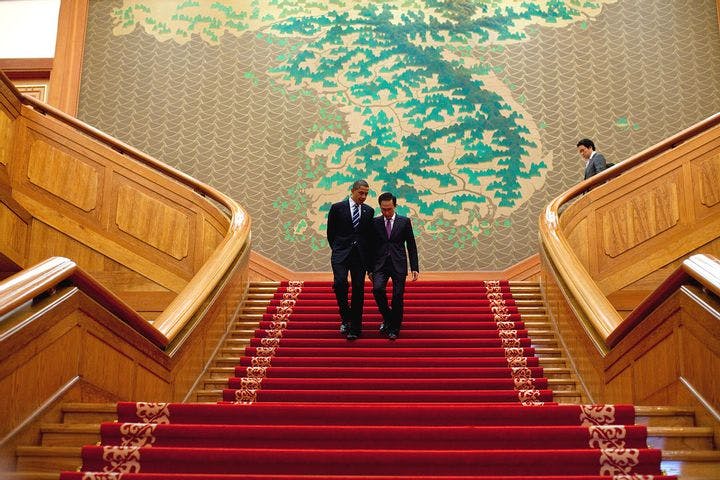Is the “pivot to Asia” isolating America’s would-be Pacific allies?
– Eric Nong
Increasingly, smaller Asian nations are asked to choose between China and the U.S. That's a tough sell.
The so-called “pivot to Asia” has been a conceptual centerpiece of the Obama Administration’s entire approach to international relations, from pursuing closer trade relationships with Pacific nations or refocusing military and diplomatic efforts away from the Middle East. It is also, at least in part, a repudiation of American unilateralism during the War on Terror.
Paradoxically, as the United States attempts to embrace multilateralism, it may risk isolating its would-be partners in Asia. Writing in Contemporary Southeast Asia, Euan Graham asserts that the Association of Southeast Asian Nations (ASEAN) is splintering as its member states are forced to choose sides between the U.S. and an insurgent China. Graham notes that since 2010, “U.S. relative market share of ASEAN’s trade had more than halved, to 9 percent, from 20 percent in 1998” — a decline he attributes to China’s economic rise.
ASEAN, says Graham, finds itself at the mercy of two powers — one bent on accomplishing expansionist goals, the other intending to protect its allies and assets as well as resorting to naval containment. China is attempting to assert its military and economic dominance, most visibly by redrawing nautical boundaries and making new territorial claims in violation of international law. The U.S., meanwhile, risks military engagement as it pursues its objectives for the region. And with no mediation between the Chinese and Americans (or any international bodies) in sight, ASEAN is losing its aura of ideological unification.
The Philippines is the only indisputable American ally in Southeast Asia and offers the U.S. “locational advantages [which] other potential host nations in Southeast Asia either cannot or will not match,” says Graham. In the age of the “pivot,” the Philippines may be emboldened to take a riskier — and perhaps more unilateral — approach to China in the future.
Then there are the United States’ “quasi-allies” in ASEAN. Vietnam is suspicious of harboring a foreign nation’s military on its soil (despite recently conducting military exercises with the U.S), and prefers to form as many alliances as possible (the U.S., India, Japan, Australia, South Korea, Russia, and selected EU states) to deter Chinese encroachment on its maritime claims. Similarly cautious, Singapore — a fervent defender of navigational rights and the international laws China disregards in the South China Sea — allows the U.S. Navy limited naval ports to dock in. As an international trading center, Singapore has pleaded with the U.S. to “adopt a non-provocative approach” to China.
Other nations are more hesitant. Thailand has a history of conciliatory relations with hegemons — which, when combined with the fact it’s home to millions of Han Chinese, leads the country to tread lightly on the issue. Malaysia has claims in the South China Sea (where Indonesia has none), which are slowly pushing the country away from China. And Indonesia, ASEAN’s de facto leader, maintains a balancing act out of fear of offending either the U.S. or China on behalf of ASEAN as a whole.
This relationship of deference to either Chinese or American policy in Southeast Asia has polarized ASEAN’s members, who are caught in the military and economic crossfire. With no signs of a diplomatic breakthrough over the South China Sea claims, ASEAN’s polarization looks set to continue. The longer the conflict draws out, ASEAN’s member nations will become increasingly subject to the decisions of whichever nation — China or the United States — they side with.
The Source: “Southeast Asia in the U.S. Rebalance: Perceptions from a Divided Region” by Euan Graham, Contemporary Southeast Asia: A Journal of International & Strategic Affairs, December 2013.
